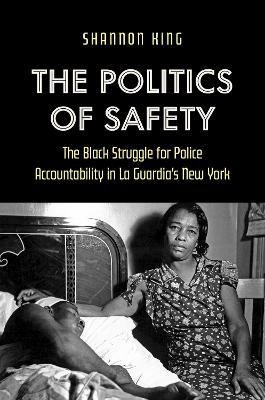
The Politics of Safety
The Black Struggle for Police Accountability in La Guardia's New York
Seiten
2024
The University of North Carolina Press (Verlag)
978-1-4696-7616-6 (ISBN)
The University of North Carolina Press (Verlag)
978-1-4696-7616-6 (ISBN)
Uncovers how Black activism for safety was a struggle against police brutality and crime, highlighting how the police withholding protection operated was a form of police violence and an abridgement of their civil rights.
For much of the twentieth and twenty-first centuries, public officials in cities like New York, Chicago, and Baltimore have criminalized uprisings—portending Black "thugs" throwing rocks at police and plundering private property—to undermine complaints of police violence. Liberal mayors like Fiorello H. La Guardia have often been the deftest practitioners of this strategy. As the depression and wartime conditions spurred youth crime, white New Yorkers' anxieties—about crime, the movement of Black people into white neighborhoods, and headlines featuring Black "hoodlums" emblazoned all over the white media—drove their support for the expansion of police patrols in the city, especially in Harlem and Bedford-Stuyvesant. Though Blacks also called for police protection and for La Guardia to provide equitable municipal resources, they primarily received more punishment. This set the stage for the Harlem uprising of 1943.
Shannon King uncovers how Black activism for safety was a struggle against police brutality and crime, highlighting how the police withholding protection operated was a form of police violence and an abridgement of their civil rights. By decentering familiar narratives of riots, King places Black activism against harm at the center of the Black freedom struggle, revealing how Black neighborhoods became occupied territories in La Guardia's New York.
For much of the twentieth and twenty-first centuries, public officials in cities like New York, Chicago, and Baltimore have criminalized uprisings—portending Black "thugs" throwing rocks at police and plundering private property—to undermine complaints of police violence. Liberal mayors like Fiorello H. La Guardia have often been the deftest practitioners of this strategy. As the depression and wartime conditions spurred youth crime, white New Yorkers' anxieties—about crime, the movement of Black people into white neighborhoods, and headlines featuring Black "hoodlums" emblazoned all over the white media—drove their support for the expansion of police patrols in the city, especially in Harlem and Bedford-Stuyvesant. Though Blacks also called for police protection and for La Guardia to provide equitable municipal resources, they primarily received more punishment. This set the stage for the Harlem uprising of 1943.
Shannon King uncovers how Black activism for safety was a struggle against police brutality and crime, highlighting how the police withholding protection operated was a form of police violence and an abridgement of their civil rights. By decentering familiar narratives of riots, King places Black activism against harm at the center of the Black freedom struggle, revealing how Black neighborhoods became occupied territories in La Guardia's New York.
Shannon King is associate professor of history at Fairfield University.
| Erscheinungsdatum | 14.12.2023 |
|---|---|
| Zusatzinfo | 16 halftones 16 |
| Verlagsort | Chapel Hill |
| Sprache | englisch |
| Maße | 155 x 235 mm |
| Gewicht | 272 g |
| Themenwelt | Geisteswissenschaften ► Geschichte ► Regional- / Ländergeschichte |
| Recht / Steuern ► Strafrecht ► Kriminologie | |
| Sozialwissenschaften ► Politik / Verwaltung | |
| Sozialwissenschaften ► Soziologie | |
| ISBN-10 | 1-4696-7616-8 / 1469676168 |
| ISBN-13 | 978-1-4696-7616-6 / 9781469676166 |
| Zustand | Neuware |
| Haben Sie eine Frage zum Produkt? |
Mehr entdecken
aus dem Bereich
aus dem Bereich
Erinnerungen
Buch | Softcover (2024)
Pantheon (Verlag)
16,00 €


